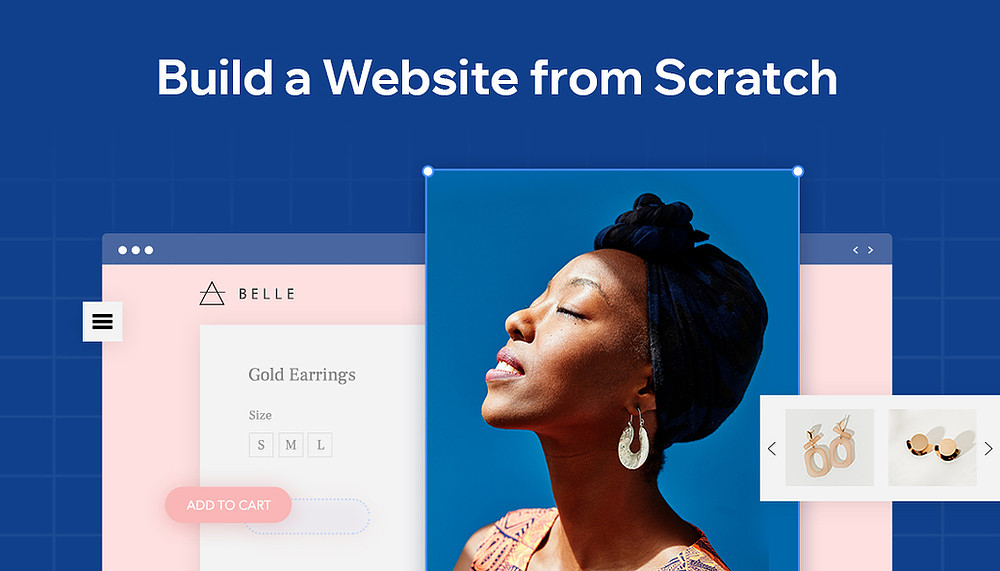Building a website can be a daunting task. But, when you know what to do and where to go, it can be an easy and even fun process! As a website developer and teacher, I’ve built many websites from scratch, and I’ve found that while there are many steps involved, the process can be broken down into manageable pieces. To help you be successful, here are some tips on how to build your website from scratch.
The first thing to know when building a website from scratch is that it’s never really from scratch since there are so many free and easy-to-use tools to help you get started. WordPress is one of the most popular and easy-to-use content management systems (CMS) available today, and it works on a simple model of the ‘Publish, Manage, Update, Delete’ framework. This means that once you’ve made a plan for your website, you can focus on just the writing and publishing process without having to worry about web hosting, software, or any of the other technical details.
It’s easy to grab a free website template online and then tweak it a bit so you can claim it as your own. But, unless you know how to get your site onto search engines, it’s going to be a lot harder to get any visitors. That’s where a custom website can come in handy. A custom site means you get to pick and choose exactly what you want to be included in, and you get access to site builders who can guide you through the process every step of the way.
Step 1: Decide on a Domain Name
Choosing a domain name is the first step on your journey to building a website. A domain name is the name of your website; for example, www.yoursite.com. It should be easy to remember and as close to the name of your business as possible. The name should also be unavailable.
A domain name is the web address to your website on the internet, and it’s a good idea to register one before you start building your site. The easiest and cheapest way to register a domain is through a domain registrar, but you can also get one through your web host. You’ll need your own hosting account, but it’s probably worth it, since having your own domain name will give your site a lot more credibility than a subdomain of someone else’s site.
Step 2: Hosting and Domain Registration
When you’re just getting started, you’ll need a hosting provider to set up your domain name and point it at your website’s home on the web. What else should you look for in a hosting company? Hosting is the backbone of your website, acting as the host for all your pages, images, and other files. You’ve probably heard of GoDaddy or HostGator, but they are not the only companies that offer hosting. There are many hosting companies out there, each with its own pros and cons, but the biggest hosting companies out there are GoDaddy and HostGator because of their advertising. You will also need to register a domain, which is the URL that people type in to get to your website. This is usually something like www.yoursite.com. Again, you don’t have to buy your domain from GoDaddy.
Step 3: Setting up WordPress
WordPress is the number one blogging platform on the internet, and it’s also the most used CMS, or content management system, on the web. Whether you want to start a blog for fun, or for business (or both), setting up WordPress is a good first step. As I said, it is being used by a web development company in Vadodara also and a housewife in Kerala at the same time! It allows you to create your own website without writing a single line of code, it is that easy.
WordPress, which grew from a niche publishing platform into a fully-fledged CMS (Content Management System) with a massive range of plug-ins and themes, is used by more than 60 million websites worldwide. It’s free and easy to use, making it a great option for beginners. Unlike many other blogging platforms, WordPress.com offers free hosting (and also provides premium web hosting) for all its users.
Step 4: Getting your First Followers
So you’ve built a website. You’ve come up with an attention-grabbing domain name, crafted a simple but attractive design, and written engaging content. You’re all set, right? Wrong. All the hard work you’ve put in up to this point is great, but it is only the beginning. Without an audience for your website, all of your efforts are going to fall flat.
Once you start producing content for your website, think about who you want to attract. The more specific you are, the better. For example: If you’re a wedding planner, you should only write blog posts about weddings. This makes it easier to target your posts to the right audience and will ensure you get more visitors.
